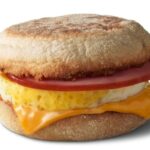Traveling can be stressful, and when you factor in dietary needs, preferences, or simply wanting the comfort of your own cooking, bringing homemade food to the airport becomes a significant consideration. If you’re wondering “Can You Take Homemade Food Through Airport Security?”, the short answer is generally yes, but there are nuances to understand to ensure a smooth passage through TSA checkpoints.
Understanding TSA Guidelines for Homemade Food
The Transportation Security Administration (TSA) has specific rules about what you can bring on a plane, and food is part of these regulations. The primary concern for TSA is security, not the type of food itself. Generally, solid food items are permissible in both carry-on and checked baggage. However, liquids and gels are subject to the 3.4-ounce (100ml) rule for carry-ons, a regulation designed to prevent liquids that could pose a security threat.
This liquid rule is where homemade food can get a little tricky. Think about your homemade items: is it a solid sandwich or a creamy soup? A fruit salad or a homemade yogurt parfait? The distinction matters when it comes to carry-on versus checked baggage and the screening process.
It’s important to note that TSA makes exceptions for certain types of liquids deemed medically necessary. This is explicitly stated on the TSA website regarding baby formula and breast milk, which are allowed in quantities exceeding 3.4 ounces in carry-on baggage. This principle can sometimes extend to other medically necessary foods, but it’s always best to be prepared and informed.
Types of Homemade Food You Can Bring
To clarify what you can pack, let’s break down common types of homemade food and how they typically fare with airport security:
-
Solid Foods: This category is generally the easiest to travel with. Think sandwiches, wraps, salads (without excessive liquid dressing), fruits, vegetables, baked goods like cookies and brownies, and dry snacks. These items usually pass through security without issue in both carry-on and checked bags.
-
Liquid and Gel-like Foods: This is where you need to be more cautious for carry-ons. Homemade soup, yogurt, sauces, dips, jams, jellies, and creamy dips are all considered liquids or gels. If you want to bring these in your carry-on, they must adhere to the 3.4-ounce rule and fit within a quart-sized bag. Larger quantities of liquids and gels should be placed in checked baggage.
-
Baby Food, Formula, and Breast Milk: As highlighted in TSA guidelines, baby formula, breast milk, toddler drinks, and baby food (including puree pouches) are considered medically necessary liquids. You can bring these in quantities greater than 3.4 ounces in your carry-on. You should inform the TSA officer about these items at the beginning of the screening process and be prepared to have them screened separately. Cooling accessories for these items, like ice packs, are also permitted.
-
Special Dietary Foods: If you have specific dietary needs that require homemade liquid foods, such as protein shakes or liquid meals due to medical conditions, you can bring larger quantities in your carry-on. Similar to baby formula, inform TSA and be ready for separate screening. It’s beneficial to have documentation from your doctor if possible, although not strictly required.
Tips for a Smoother Airport Security Experience with Homemade Food
To make your airport security experience as hassle-free as possible when traveling with homemade food, consider these tips:
-
Be Prepared to Declare: When you reach the TSA checkpoint, inform the officer that you are carrying homemade food, especially if it includes liquids in quantities over 3.4 ounces or items that might be questionable.
-
Separate Your Food Items: Place your food items in an easily accessible location in your carry-on bag, or even better, in a separate bin when going through the X-ray machine. This helps TSA officers screen them more efficiently.
-
Use Clear Containers: While not mandatory, using clear containers for your food, especially liquids, can expedite the screening process. TSA recommends clear, translucent bottles for baby formula and breast milk to potentially avoid opening them for further inspection.
-
Understand Screening Procedures: TSA officers may need to screen your homemade food, especially liquids, for explosives or prohibited items. This might involve additional screening methods like Explosive Trace Detection. TSA states that screening will never involve placing anything into medically necessary liquids like formula or breast milk.
-
Consider TSA Cares: If you have concerns about the security screening process due to medical conditions or disabilities related to your need for homemade food, you can contact TSA Cares for assistance prior to traveling.
Conclusion
Bringing homemade food through airport security is generally permissible. Solid foods are rarely an issue, while liquid and gel-like foods need to adhere to the 3.4-ounce rule for carry-ons, unless they fall under exemptions like baby formula or medically necessary liquids. By understanding TSA guidelines, preparing your food appropriately, and communicating with TSA officers, you can successfully bring your homemade food and enjoy a more comfortable and personalized travel experience. Remember to always check the latest TSA guidelines before your travel date, as regulations can change.
